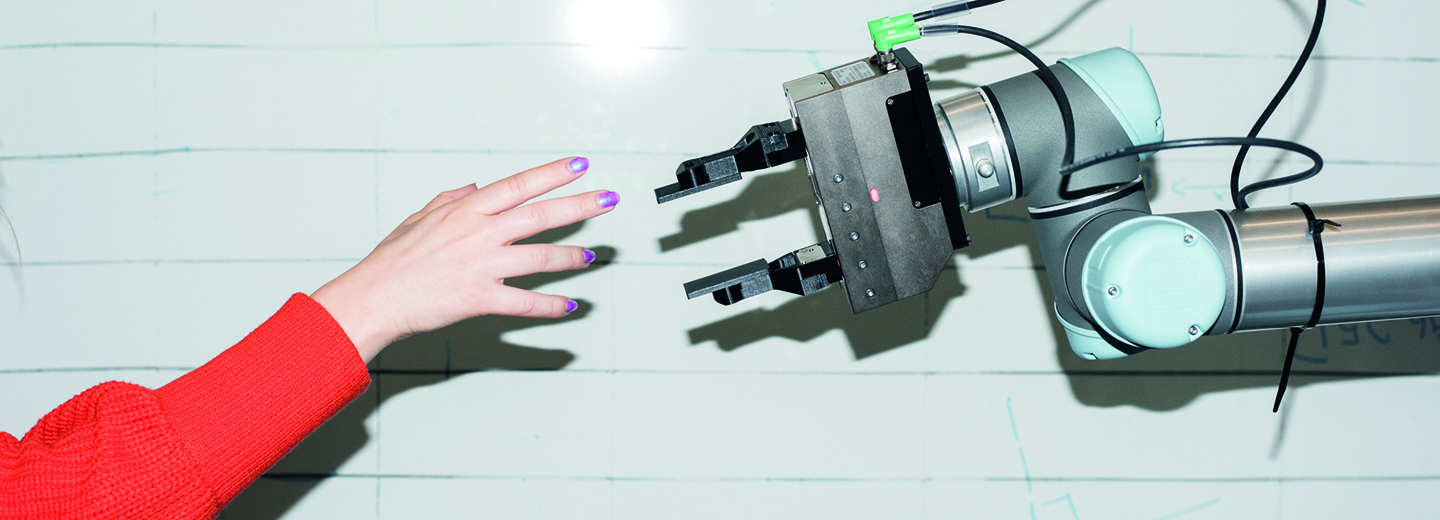
Collaborative robots
State-of-the-art Smart Learning Factory and Cobot cell that can be optimised for any new product and is real-time connected and controlled by a virtual model
Keywords and applications
Keywords
Cobots; digital twins; lean automation; collaborative robots; stochastic and continuous simulation; virtual manufacturing
Applications
High-mix low-volume (HMLV) production; mechatronics products and production
Profile
Collaborative robots can share workload of their fellow humans in labour intensive tasks, e.g. assembly. Cobots are lightweight, portable and safer for their fellow humans. For implementing cobots in manufacturing systems, several challenges need to be engineered. The concept of digital twins can help to solve several of these challenges. A virtual simulation model of the physical system developed in the early phase of the plant development can help to perform close to reality experiments to identify and eliminate the unpredicted undesirables.
During production, these cobot based systems can be supported through digital twins for faster task distribution between human and robot, robot path optimisation to safe guard the fellow humans, safety and risk evaluation, and faster programme generation with each production changeover. This is important to enable high-mix low-volume production.
The data collected from the physical system will continue to make the simulation model get mature and make knowledge based decisions based on historic data.
Services
Digital twins for cobots can help to offer solutions such as
- Skill-based dynamic task distribution between human and robot
- Faster robot programme generation directly from the simulation models
- Productivity analysis through simulation models and comparing the current and future scenarios
- Robot path optimisation in the simulation models
- Layout optimisation for implementing cobots
- Realistic 3D visualisation of the future factory scenario (coupled with virtual reality (VR), the user can enter and interact with the new factory and collaborate with distantly located colleagues)
- Additive manufacturing (3D printing)-based gripper fingers and fixtures. Optimisation of geometries through artificial intelligence to reduce material.
Labs & equipment
The Innovation lab - Smart Learning Factory and Cobot cell
We are developing a state-of-the-art human-robot work cell that can be optimised for any new product and is real-time connected and controlled by a virtual model. It is part of the Innovation Lab at MCI. A recent kind grant by Fabrikant Mads Clausen Foundation will enable the digital connectivity of the physical system with the virtual simulation model (a digital twin). It is a playground for our research, where we can present cobot capabilities and digital twin benefits within an industrial case.
Contact
Ali Ahmad Malik
PhD student
SDU Technology Entrepreneurship and Innovation (TEI)
Department of Technology and Innovation (ITI)
T +45 6550 1675
alimalik@mci.sdu.dk